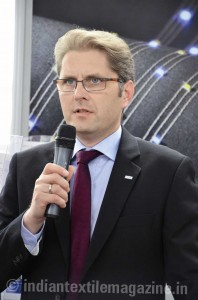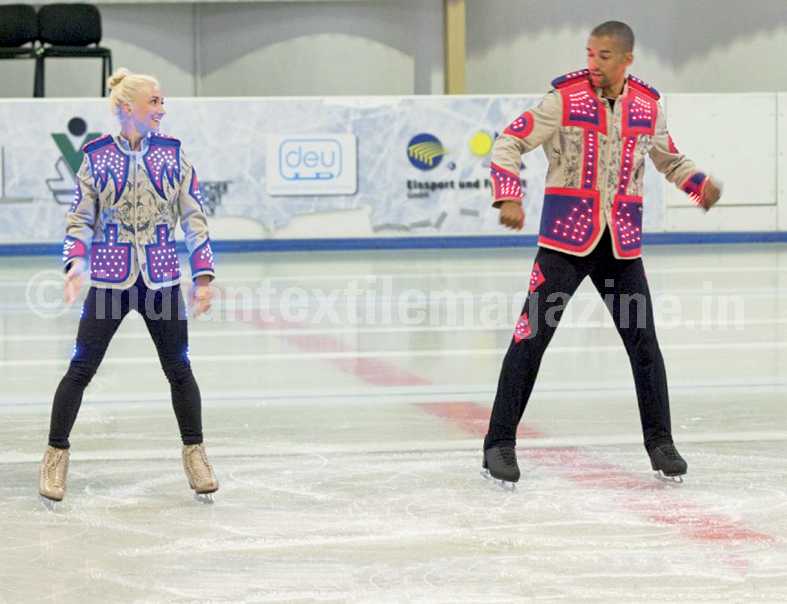
TITV Greiz is a German business-related research institute for special textiles and flexible materials. In the field for more than 20 years, the company keeps developing new high-tech solutions, taking the classical textile technology as the basis for new working materials. The institute has produced a variety of textiles, including those that glow, and skiing gloves from which one can make or receive phone calls.
Conductive paths for illuminated textiles using light-emitting diodes (LEDs) are usually applied to textiles with weaving or stitching technologies. Afterwards, the very small LEDs are handled with tweezers outside the machine and positioned and contacted manually on the conductive paths with solder or conductive adhesive. However, the associated inaccuracies and the expenses incurred result in high manufacturing costs. This made manufacture of commercial illuminated textiles very expensive, and hence the entire process was limited to small areas or prototypes.
The functional integration of electronics into textiles offers numerous new fields of application. “The most important application of these LED textiles is for making costumes for figure skating champions”, says Dr. Uwe Möhring, Managing Director, TITV Greiz.
Developments for the integration of new functions provide capabilities for further visions. In comparison to conventional products, smart textiles are flexible, shapeable and lightweight. They are designed for applications in automotive and aircraft construction as well as for solutions in medical engineering, industrial as well as home and protective clothing.
The economical manufacture of LED illuminated textiles is possible both for high lot sizes and small numbers of pieces. In addition, the automated component feed guarantees exact positioning and improved process reliability for a constant quality. The process flow is repeatable and is not influenced by the operator.

Asked about the launch of the company’s new products at Techtextil 2013, Dr. Uwe Möhring said: “TITV researchers have come up with some wonderful innovations like light-emitting textiles, i.e., they can now attach LEDs to conductive threads using an embroidering machine. They can also solder electrical contacts to the textiles. When this material is mass-produced, it could be used for illuminated headliners and interior door panels for automobiles also.”
Besides being washable and highly reliable, the special advantages offered by these textiles include reduced processing time, almost 50 per cent cut in manufacturing cost, consistent product quality and individual design options.